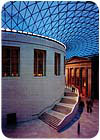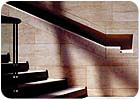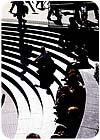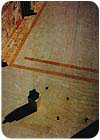
British architect Sir Norman Foster received a Marble Architectural Award for his work on the Great Court at the British Museum of London, which uses French and Spanish limestone from Savema of Pietrasanta, Italy.
British architect Sir Norman Foster and his Chinese-American colleague, I.M. Pei, were selected among the winners of the 22nd Marble Architectural Awards (MAA 2006), the prestigious international award that is given to designers who use Italian marble and other stones in their work - and to their stone suppliers. The official announcement was made in Carrara, Italy, and the awards were presented at CarraraMarmotec 2006, which took place from May 31 to June 3.

Renowned Chinese-American architect I.M. Pei also received an award in the “External Facings Section†of the program for his work on the The Deutsches Historisches Museum (German History Museum), which utilizes beige limestone.

Competition judges praised Pei's use of stone, which included shapes that reference existing buildings and glazed surfaces, “which frame, like an art gallery, the surrounding historical buildings.â€

The prize for the “Interior Design Section†was won by Belgian architect Binst Crepain, for his use of White Carrara marble in a private home in Humbeeck, Belgium.

In the “Urban Landscape Section,†Skidmore, Owings and Merrill's U.K. office was honored for the restoration of the Broadgate Public Space in London, England. The materials selected by Skidmore, Owings and Merrill included Pedro Sardo and travertine, and they were supplied by Campolonghi Italia of Massa, Italy.

The other honor in the “Urban Landscape Section†went to the Croatian, Nenad Fabijanic, for an outdoor seafront square.

A special mention also went to the Christ Pavilion in Hanover, Germany.

RCR Aranda Pigem Vilata Arquitectes was honored with a special mention for its use of stone at the Law Faculty of Girona, Spain.

The stonework of the Hotel Concorde in Berlin, Germany, received a special mention from the jury.
Special mentions also went to the Christ Pavilion in Hanover, Germany; the Hotel Concorde in Berlin, Germany; and the Law Faculty of Girona, Spain, designed by RCR Aranda Pigem Vilata Arquitectes.